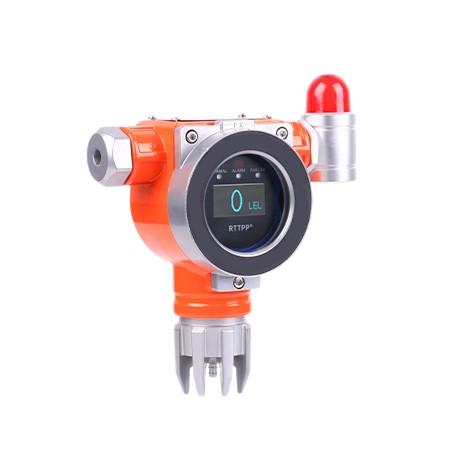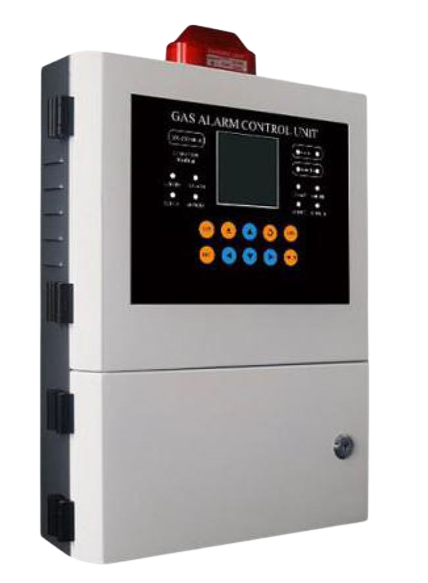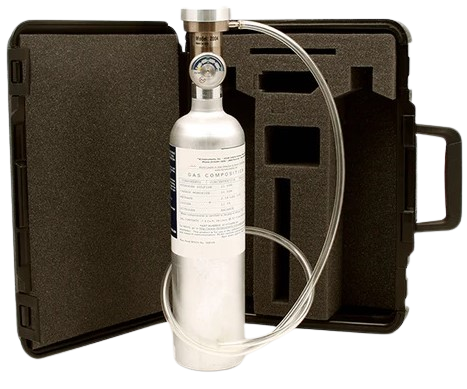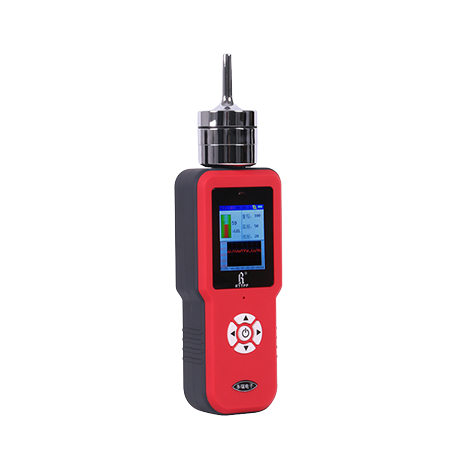Gas detection systems are designed to monitor and alert individuals to the presence of potentially hazardous gases in various environments. These systems are used in industrial settings, laboratories, manufacturing facilities, and other locations where the presence of toxic or combustible gases poses a risk to health and safety.
The main components of a typical gas detection system include:

LEL Gas Sensors
LEL (Lower Explosive Limit) sensors are used to measure the concentration of flammable gases in the air. They are commonly used in industrial settings to monitor for potential fire or explosion hazards.

LEL Gas Control Panel
LEL gas sensor control panels are used to monitor and manage Lower Explosive Limit sensors in industrial settings. These panels are designed to provide real-time data on the concentration of flammable gases in the environment, as well as to trigger alarms and control mitigation systems in the event of a potential hazard.

Gas Calibration Kit
A gas calibration kit is typically used for calibrating and testing gas detection and monitoring equipment, including LEL (Lower Explosive Limit) sensors. These kits often include a cylinder of calibration gas, a regulator, tubing, and a carrying case. The calibration gas provided in the kit is used to ensure that gas detection instruments are accurately measuring.

Hand Held LEL Sensor
Handheld LEL (Lower Explosive Limit) sensors are portable devices used for measuring the concentration of flammable gases in the air. These compact instruments are designed for on-the-go use, providing flexibility for detecting potential hazards in various environments.
Gas Detection Systems play a crucial role in ensuring safety across various industries and environments. From industrial settings to residential areas, the ability to detect the presence of harmful gases is essential for preventing accidents, protecting human health, and minimizing environmental impacts. Also, gas detection systems are designed to monitor the air for the presence of specific gases. They are also good for alerting individuals to potential hazards and enabling timely intervention. In this response, we will explore the importance of gas detection. We will also explore the different types of gas detection technologies, and the key considerations in selecting and using gas detection systems.
Importance of Gas Detection Systems play is vital in safeguarding personnel, facilities, and the environment from the risks associated with hazardous gases. Also, in industrial settings, such as chemical plants, refineries, and manufacturing facilities the release of toxic or flammable gases can pose immediate dangers. Moreover, dangers to workers and the surrounding community. In addition, without reliable gas detection systems in place, the consequences of an undetected gas leak. In addition, the accumulation can be catastrophic, leading to injuries, fatalities, and property damage.
Commerical and Residential
Beyond industrial applications, gas detection is also crucial in commercial and residential settings. Moreover, carbon monoxide, for instance, is a colorless, odorless gas that can be produced by malfunctioning heating systems, portable generators, or vehicle exhaust. Also, without a reliable carbon monoxide detector, individuals may be unaware of its presence. Furthermore, it can lead to potential carbon monoxide poisoning. In these scenarios, gas detection technologies serve as a critical line of defense. Furthermore, this provides early warning and enables appropriate responses to mitigate risks.
Types of Gas Detection
Technologies encompass a range of methods for identifying and quantifying the presence of gases in the air. These technologies can be broadly categorized into the following types:
Fixed Gas Detection Systems
Fixed gas detection systems are designed for continuous monitoring of specific locations within a facility. These systems typically consist of stationary gas sensors strategically placed in areas where gas leaks or emissions are most likely to occur. When the concentration of a target gas exceeds a preset threshold, the system triggers alarms. It also triggers alerts to the appropriate personnel, allowing for prompt action to be taken.
Portable Gas Detectors
Portable gas detectors are used by personnel to monitor their immediate surroundings and assess potential gas hazards in real time. These handheld devices are particularly valuable for workers in confined spaces. Also, in hazardous environments, or emergency response situations. Additionally, portable gas detectors may utilize various sensor technologies. It can be electrochemical, infrared, or catalytic bead sensors, to detect different types of gases.
Wireless Gas Detection Systems
Wireless gas detection systems leverage wireless communication protocols to transmit data from individual gas sensors to a centralized control panel or monitoring station. This approach offers greater flexibility in installation and scalability, allowing for the expansion of monitoring coverage without the need for extensive cabling. Also, wireless systems can be particularly beneficial in large or dynamic environments where traditional wired installations may be impractical.
Area Monitoring and Sampling
In addition to point-based gas detection, area monitoring and sampling techniques involve the use of sampling pumps or air monitoring equipment to collect air samples from different locations. In addition, these samples are then analyzed for the presence of specific gases using laboratory-grade analytical instruments. Finally, area monitoring and sampling are often employed for comprehensive assessments of air quality. Air quality is in environments where multiple gases or complex mixtures may be present.
Selecting and Using Gas Detection Systems
When selecting gas detection systems, several factors must be considered to ensure their effectiveness and suitability for the intended application.
These factors include:
Types of Hazardous Gases
Different gases require different sensor technologies for accurate detection. Whether the target gases are toxic, flammable, or inert, it is essential to choose sensors that are specifically designed to detect the relevant gas types and concentrations.
Environmental Conditions
The environmental conditions, such as temperature, humidity, and potential interferences, can impact the performance of gas detection systems. Systems should be selected or designed to withstand the specific environmental challenges of the operating environment.
Calibration and Maintenance
Regular calibration and maintenance of gas detection systems are crucial to ensure their accuracy and reliability. Proper calibration verifies that the sensors are responding accurately to the presence of target gases, while routine maintenance helps prevent false alarms and unexpected failures.
Alarm and Response Integration
Gas detection systems should be integrated with appropriate alarm and response mechanisms, including audible and visual alarms, automatic shutdown systems, or emergency ventilation controls. Effective integration ensures that upon detection of hazardous gases, timely and appropriate actions can be initiated.
Training and Awareness
Proper training of personnel on the operation and interpretation of gas detection equipment is essential for effective response to gas-related incidents. Workers should be familiar with the system’s alarms, evacuation procedures, and the proper use of personal protective equipment.
In conclusion, gas detection is an indispensable component of safety management across diverse industries and environments. By employing advanced gas detection technologies and adhering to best practices in system selection, installation, and maintenance, organizations and individuals can significantly reduce the risks associated with hazardous gases, protect human health, and preserve the integrity of the surrounding environment.
